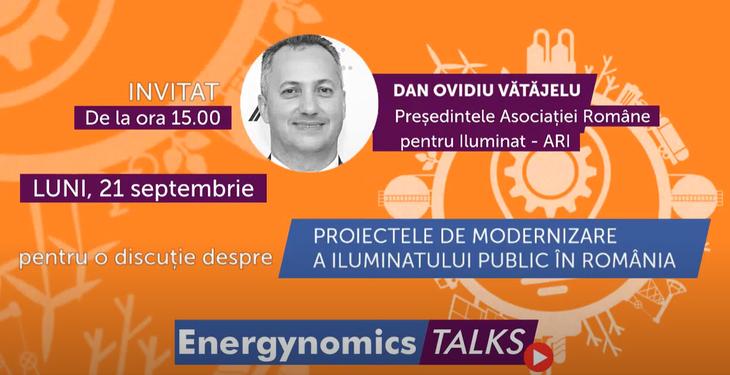In lighting, as in management, it is extremely important to measure what we are being offered, says Dan Vătăjelu, president of ARI – Romanian Association for Lighting. However, “in 90% of cases the lighting or luminance level is not measured after the installation ended; only starting calculations are taken into account, and these are often rigged”, Dan Vătăjelu told us at EnergynomicsTalks.
There are standards, there is legislation, there are regulations, there are all the necessary tools to provide quality lighting in Romania
Although there are many contracts that promise to recover the investment in energy savings, no consumption measurements are made – although there are clearly specified lighting quality levels. “We recommend the use of energy performance contracts because they cover all expenses in one place – the electricity and investments and maintenance altogether. Otherwise, the public authorities pay the two categories of expenses from separate accounts and I am convinced that in 99% of cases there is nobody to check whether these expenses are in line with the commitments in a contract that is several years old”, he explained.
Most localities work with unlicensed operators
In public lighting there are laws that are not enforced, even more than 10 years after their adoption. An example is Law 230 of 2016, which stipulates that the public lighting service must be provided by licensed operators. “At the last verification, there were 120 operators licensed for a number of 2,897 local public authorities. Currently, the licensed operators operate in only about 150 localities – the rest of them work with operators which are not licensed, so their breaching the law”, said Dan Vătăjelu. “In the last two years, the regulatory body – the National Regulatory Authority for Community Services of Public Utilities (ANRSC) – has started control actions at the level of town halls, to verify how this type of public service is provided, and the fines are quite large, up to 20,000 lei.” An additional problem is the local authorities are used to allocate funds for investments, but not for maintenance services. “In many cases, they forget that regular maintenance is needed to maintain the equipment warranty.”
In 2020, the reduction of the workload caused by the health crisis led to increased competition between the licensed operators, once some strong players, such as Electrica or CEZ Romania, entered this market. “In 2019 there were 2-3 participants in a lighting auction, this year we even saw 10 companies competing against each other,” Vătăjelu said.
